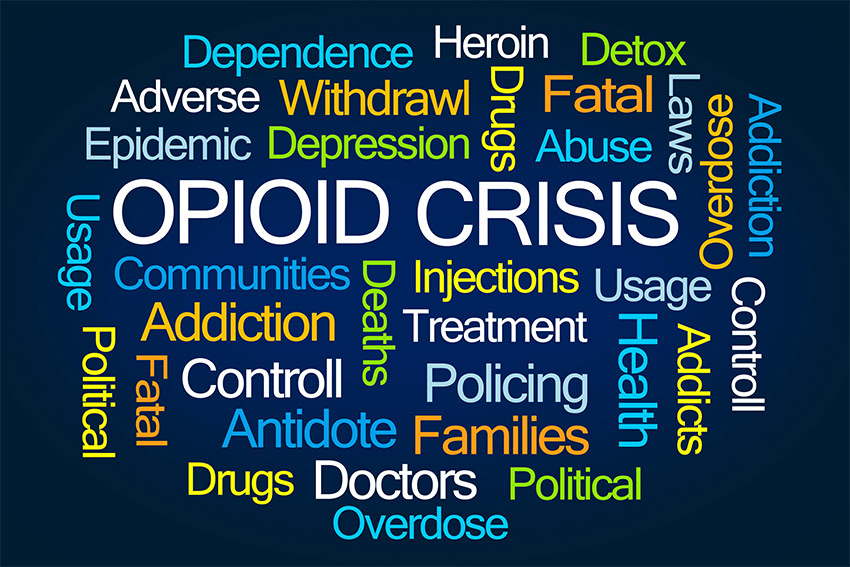U.S. Congress Passes Sweeping Opioid Legislation
In 2017, overdose deaths from opioids were higher than people killed in the Vietnam War—for the second year in a row. Opioid substances include prescription medications, the illicit drug fentanyl and illegal drugs like heroin. Combined, these substances cause more deaths from the opioid crisis than from automobile accidents and suicides. Opioid dependence can happen in as little as five days. The National Institute on Drug Abuse estimates that 8 to 12 percent of all patients develop an opioid use disorder, and that there are 115 opioid overdoses every day in the United States.
President Trump has made the opioid crisis a top priority of his administration, and recently declared the week of September 16-23 Prescription Opioid and Heroin Epidemic Awareness Week. He has directed unprecedented funding to the crisis and has developed other important measures in fighting the opioid crisis. First, the Department of Health and Human Services (HHS) just awarded more than $1 billion in grants to states and local communities to address drug demand, prevent drug use, treat addiction locally and stop the drug flow into communities across the nation. In total, the latest government funding bill added nearly $4 billion in anti-opioid funding to the budget.
The White House has also created a media campaign called “Know the Truth and Spread the Truth” to teach both parents and young people about the risks of opioids. First responders now have fentanyl safety recommendations to properly respond to calls and treat patients in the field when these potent and dangerous synthetic opioids are encountered on the front lines.
In June, the House passed its version of the opioid legislation with approximately 400 votes. In September, the Senate passed its own version with over 90 votes in favor of the legislation. The two chambers had to reconcile the separate bills and agree on one piece of legislation going forward. They did that on October 18. The resulting bill is one of Congress’ most significant bills in recent memory. In a rare display of bipartisanship amidst the furor leading up to the November 2018 mid-term elections, the House and the Senate agreed to the sweeping legislation and have sent it to the President’s desk for his signature.
While the Congressional Budget Office has yet to officially cost the new bill, a good estimate is around $8 billion over five years. The bill takes broad aim at a remedy for the opioid crisis. Several key aspects of the bill include:
- Increased funding for non-opioid-based painkiller research
- Increased access to drug treatment.
- Increased law enforcement and public health measures to address the crisis
- Blocking mail imports from other countries of deadly fentanyl, a powerful synthetic compound that is 100 times stronger than morphine
- Ability for nurses and other non-physician practitioners to prescribe anti-addiction medications like suboxone and buphrenorphine (with additional training and a special license)
- Lifted restrictions so that Medicaid can be used to treat substance abuse. States have been restricted from spending federal Medicaid dollars on certain types of residential addiction treatment facilities.
- Expands institutions eligible as inpatient behavioral health and mental disease facilities to help in addiction treatment
- Increased funding for non-opioid-based painkiller research
H-Wave® is one such alternative treatment. Some of H-Wave’s FDA cleared indications for use include: use for chronic pain, post-operative pain, acute and temporary pain. A body of published research evidence attests to the effectiveness of the pain-reducing technology.
Many patients with chronic debilitating pain get to the point where it is so bad they are willing to try anything to find relief—except for opioids. This is where H-Wave can help – many of these patients see relief in a very short time using H-Wave® treatments. H-Wave’s dual frequencies address both pain and rehabilitation issues. The low frequency works to improve blood flow to the tissue, and increase lymphatic action to evacuate waste. In doing so, toxins in these tissues are flushed away and nutrients are brought into the area through non-fatiguing muscle contractions. The high frequency works to shut down the pain signals within the nerve to provide a lasting analgesic effect. The device also has FDA cleared indications for use for improving range of motion, relaxing muscle spasms, preventing disuse atrophy and muscle re-education, in addition to the aforementioned increased circulation and various types of pain.
The electrical stimulation technology is non-invasive and drug-free, and represents a viable, proven and effective alternative treatment option to opioids. Best of all, there are no harmful side effects. Try H-Wave today and be opioid-free.
